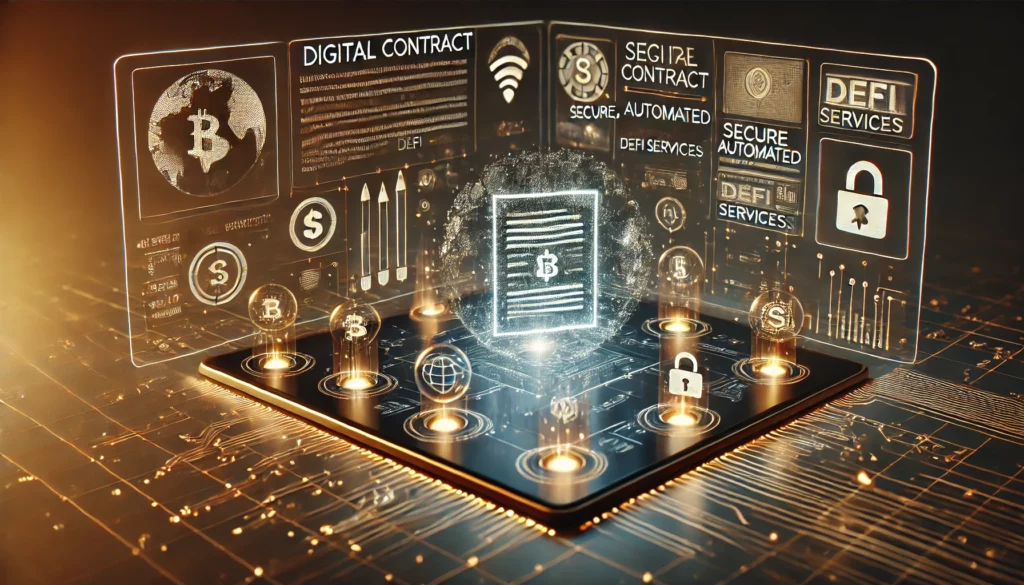DeFi 101: Is DeFi the future of finance? Exploring decentralized finance
A financial revolution in the making
Imagine a financial system that runs without banks, credit card companies, or even governments—a world where transactions are peer-to-peer, transparent, and decentralized. This is Decentralized Finance, or DeFi, an innovative approach that leverages blockchain technology to offer financial services without the need for traditional financial institutions.
In this guide, we’ll cover the basics of DeFi, how it works, and why many believe it represents the future of finance. By the end, you’ll have a foundational understanding of DeFi’s potential, its benefits, and its challenges.
What is DeFi? Understanding decentralized finance
DeFi, short for Decentralized Finance, refers to a broad range of financial services built on blockchain networks that function without centralized intermediaries like banks. Instead, DeFi relies on smart contracts—self-executing contracts with terms directly written in code—that allow users to lend, borrow, trade, and invest seamlessly.
DeFi protocols are most commonly built on the Ethereum blockchain, though other blockchains like Binance Smart Chain, Solana, and Avalanche are also becoming popular in the DeFi space. This system is open, accessible, and transparent, enabling anyone with an internet connection to participate.
Practical tip: Think of DeFi as a financial ecosystem that cuts out the middlemen, empowering individuals to control their own finances and assets directly.
Stat: As of 2024, over $60 billion is locked in DeFi platforms, highlighting the rapid growth and adoption of decentralized finance.
Simplify how
Subscribe to stay ahead in crypto with tips, guides, and the latest blockchain insights delivered to your inbox.
How does DeFi work? The basics of decentralized finance
DeFi applications leverage blockchain technology and smart contracts to create trustless, secure, and transparent financial systems. Here’s a breakdown of the core components of how DeFi works:
- Blockchain networks: DeFi relies on decentralized blockchain networks (like Ethereum) to ensure transparency and security, with each transaction recorded and verified by multiple nodes.
- Smart contracts: Smart contracts automate processes like lending and borrowing. For example, in a lending contract, the code ensures the lender receives collateral if the borrower defaults.
- Decentralized applications (dApps): DeFi uses decentralized applications or dApps that interact with blockchain networks. Examples include Uniswap, Jupiter Swap for trading, and Aave for lending.
- Stablecoins: DeFi often uses stablecoins (like USDC or DAI) to minimize volatility, as they’re pegged to stable assets like the US dollar.
This ecosystem allows users to manage financial transactions without intermediaries, making financial services faster, more affordable, and globally accessible.
Quote: “DeFi is like a 24/7 global financial network that puts people, not banks, in control.” — Andreas Antonopoulos, Blockchain Expert.
Top use cases for DeFi
DeFi is disrupting various areas of traditional finance. Here are some of the most popular and impactful use cases for decentralized finance:
- Lending and borrowing: DeFi platforms like Aave and Compound allow users to lend and borrow cryptocurrency assets without traditional financial institutions. Lenders earn interest on their crypto, while borrowers can access funds by putting up collateral.
- Why it matters: Traditional loans can involve lengthy credit checks and high fees, but DeFi lending is fast, open, and typically cheaper.
- Decentralized exchanges (DEXs): DEXs like Uniswap and Jupiter Swap allow users to trade cryptocurrencies directly with each other, rather than relying on centralized exchanges like Coinbase. DEXs use automated smart contracts to manage liquidity pools and trades.
- Why it matters: DEXs offer users full control over their assets, as they don’t require depositing funds with a third party.
- Yield farming and liquidity provision:Yield farming allows users to earn additional tokens by lending or staking their crypto assets on DeFi platforms. Liquidity providers add their funds to liquidity pools and earn a percentage of trading fees.
- Example: Platforms like Yearn.finance optimize yield farming opportunities for users, helping them earn passive income from their crypto assets.
- Stablecoins and payments:Stablecoins are used in DeFi to provide a stable asset for transactions and payments. Platforms like MakerDAO offer the DAI stablecoin, which maintains a stable value and allows for predictable payments and transfers.
- Why it matters: Stablecoins are a practical solution for avoiding the volatility of typical cryptocurrencies, making them ideal for everyday transactions within DeFi.
Quick tip: To explore DeFi hands-on, try interacting with a small amount of stablecoins in a DeFi application like Aave or Uniswap. Many apps are user-friendly and perfect for beginners.
Benefits of DeFi: Why it’s reshaping finance
DeFi’s rapid growth is due to several compelling benefits that distinguish it from traditional finance:
- Accessibility: DeFi is open to anyone with internet access, regardless of location, making financial services available to the unbanked.
- Transparency: All DeFi transactions are publicly recorded on the blockchain, ensuring a high level of transparency.
- Lower costs: DeFi eliminates intermediaries, significantly reducing transaction fees and other associated costs.
- Enhanced security: DeFi transactions are secured by blockchain technology, making them resistant to tampering and fraud.
Stat: DeFi platforms can reduce transaction fees by up to 90%, compared to traditional financial systems.

Challenges and risks of DeFi
Despite its benefits, DeFi is not without challenges and risks:
- Smart contract vulnerabilities: Bugs or flaws in smart contract code can lead to security breaches, which hackers can exploit.
- Market volatility: Cryptocurrencies are known for their price volatility, which can affect DeFi investments and returns.
- Regulatory uncertainty: Governments are still determining how to regulate DeFi, which could impact its future.
Practical tip: Only invest what you can afford to lose in DeFi platforms, and consider using audited protocols for additional security.
The future of DeFi: A new financial frontier?
DeFi is an evolving space with the potential to reshape the entire financial industry. From loans and insurance to trading and payments, DeFi is positioning itself as a decentralized alternative to traditional financial systems. As blockchain technology advances, we can expect more innovative DeFi applications that make finance more accessible, transparent, and secure for users worldwide.
Conclusion: Embracing the future with DeFi
DeFi offers a glimpse into a financial future where individuals have greater control over their money, free from intermediaries and centralized control. By understanding how DeFi works and its use cases, you’re one step closer to navigating the future of decentralized finance confidently.
Explore DeFi cautiously, take advantage of its benefits, and prepare to be part of a financial revolution.
FAQs
Here are answers to some frequently asked questions.
DeFi, or decentralized finance, refers to financial services like lending, borrowing, and trading offered on decentralized platforms using blockchain technology. Unlike traditional finance, DeFi eliminates intermediaries like banks, allowing users to interact directly and retain more control over their assets.
While DeFi offers many benefits, it also comes with risks. Security largely depends on the quality of smart contracts and the platform’s audit standards. Since DeFi is still an emerging sector, users should exercise caution and only use reputable, well-audited platforms.
To begin, you’ll need a cryptocurrency wallet compatible with the Ethereum blockchain (such as MetaMask) and funds like ETH or stablecoins. Once set up, you can connect your wallet to DeFi platforms like Aave or Uniswap to explore lending, borrowing, or trading.
Stablecoins are cryptocurrencies pegged to stable assets, like the US dollar, to minimize volatility. They provide stability within DeFi, allowing users to make predictable transactions and investments without worrying about price swings.
Yes, DeFi offers opportunities to earn passive income through yield farming, staking, and liquidity provision. However, these activities come with risks, so it’s important to understand the platform and market conditions before investing.
